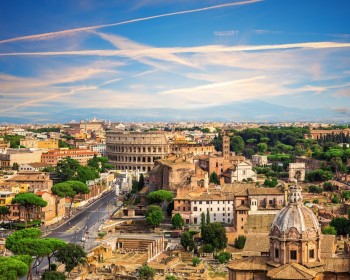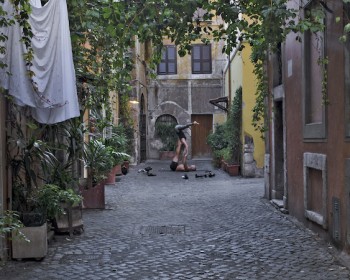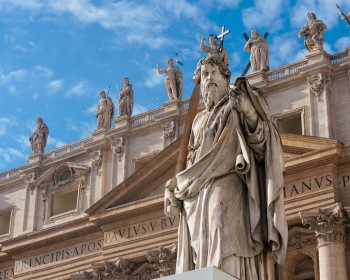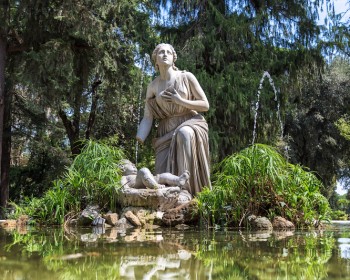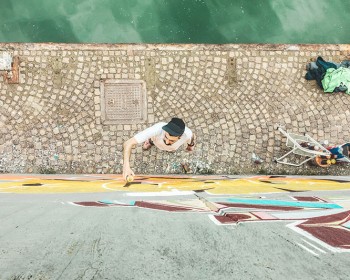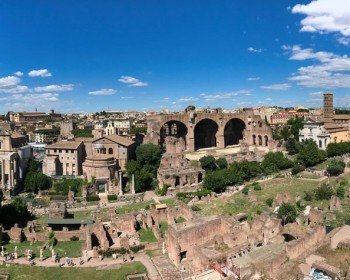Are you looking for the ideal setting for your brief trip to Rome? Rione Trevi – rione means district – offers everything to fit tourists’ needs and wishes! From the famous Trevi fountain to the most romantic Roman alleys, rich in shops and workshops.
History
Trevi is the second district of Rome and its name probably derives from the Latin word trivium. This term was used to indicate the junction of three streets in Piazza dei Crociferi, the modern Trevi square.
During the ancient Roman period this district used to be divided into two areas: the flat one, near the Tiber, and the hilly one. The former was the center of everyday life, while the latter has always been a wealthy residential place. After the fall of the Roman empire, lots of people moved next to the river, where the rione started to be full of buildings. On the contrary, almost nothing was built on the hills until the Renaissance.
When Rome became the major city of Italy, in 1870, the higher part of the area changed completely its appearance: not very crowded and full of churches and monumental buildings.
What to see
The principal highlight of this district is Trevi Fountain, for sure! Below a list of something you shouldn’t miss.
- Trevi fountain
The famous fountain marks the terminal point of the modern Aqua Virgo, one of the aqueducts that supplied water to ancient Rome. Legend has it that if you throw a coin in the fountain giving your back to it, and then you turn immediately just to see the moment in which the coin enters the water, you absolutely will go back to Rome. It represents Triton guiding Oceanus' shell chariot, taming hippocamps.
The fountain is well known also because it appeared in several movies like Federico Fellini's "La dolce vita", where Anita Ekberg dances exactly in the fountain, inviting Marcello Mastroianni to join her in the water.
Quirinal Palace
Located on the Quirinal hill, the highest of the Roman seven hills, it is a historic building and the official residence of the President of the Italian Republic. It is one of the biggest palaces in the world, just think that the White House of the United States of America is one-twentieth of its size! The Quirinal palace dates back to 1583 and was commissioned by Pope Gregory XIII as a papal summer residence. Don’t miss the chance to visit its gardens too! They are like an island elevated over Rome.
Furthermore, opposite to the Quirinal palace, there is the Scuderie del Quirinale. Their original function was that of carriage house and stables of the palace. Enduring since 1732, nowadays it is a venue for major cultural events and exhibitions.
- Barberini square
Located in the historic city center, at the top of via del Tritone, the square takes its name from Barberini palace – though the palace’s entrance looks onto Via delle Quattro Fontane –. Until the 19th century, this was just a suburban place.
In the middle of the square there is a big fountain representing the Triton. Commissioned by Pope Urban VII – a member of Barberini family – to the Baroque sculptor Gian Lorenzo Bernini, it is a 17th-century fountain created to celebrate Barberini’s power, symbolized with the Triton. Bernini helped to design and construct Barberini palace too.
The Four Fountains
Characterized by the presence of four late Renaissance fountains (1588-1593), it is an intersection between Via delle Quattro Fontane and Via del Quirinale. One of the fountains probably represents the River Tiber in front of an oak tree, then a she-wolf – a symbol of Rome – was added. The second fountain symbolizes the River Aniene, a tributary of the Tiber, which supplies water to many Roman aqueducts. The other two fountains represent female figures: the Goddess Diana – the symbol of Chastity – and the Goddess Juno – he symbol of Strength –.
The later Baroque church of San Carlo alle Quattro Fontane, by Francesco Borromini, is located near the fountains, and takes its name from them.
- Vicolo Scanderberg
If you are looking for something less touristy, but fascinating, this is the right alley for you! It takes the name from Palazzetto Scanderberg, built for the Albanian prince known with the name Scanderberg – his portrait is placed on the façade of the palace – He came to Italy to ask Pope Paul II some help for the Albanian Christians, who were fighting against the Turkish people. The alley was the first one to have a foreign name in Rome.
How to get to Trevi District
You can easily get to Trevi district by underground. Just take the A-line – the orange one – and get off at Barberini stop. You can also double check on the Atac website which bus will bring you there or benefit from a great walking through Roman historic alleys.
Peculiarity
Located exactly along the underground of this rione you can still visit something really unexpected: the Vicus Caprarius or the City of Water. It is an archaeological site -dating back to 60a.D.- with the rest of the first Roman aqueduct, part of an intricate labyrinth of ancient remains. You’re allowed to observe the archaeological witnesses of the events that characterized the history of Rome.
You can see just a little part but it's really worth!
If you are passionate about shopping, don’t miss a stroll through Via del Corso, via del Tritone and Via Condotti. They are full of shops and places where you can enjoy a pleasant break.



